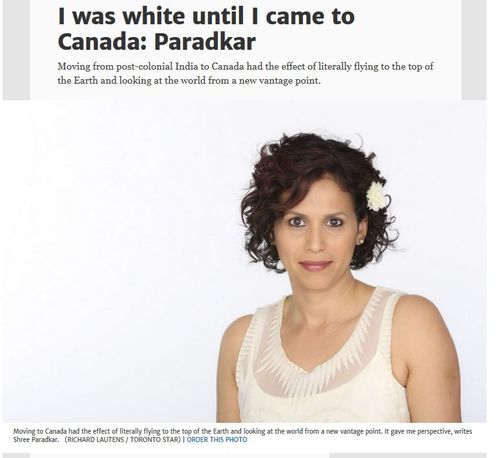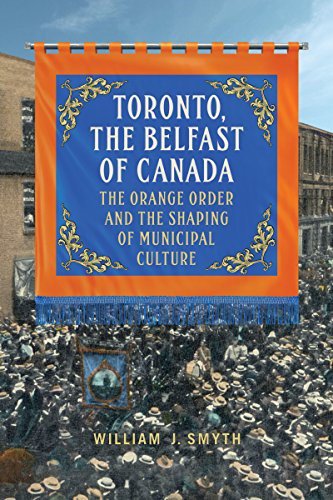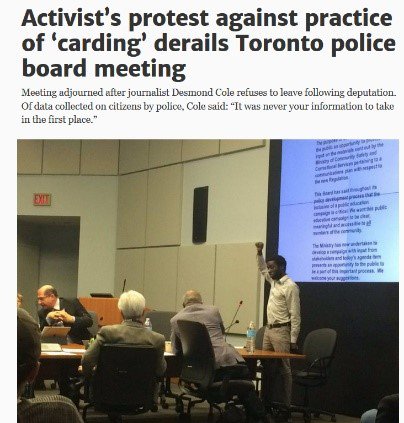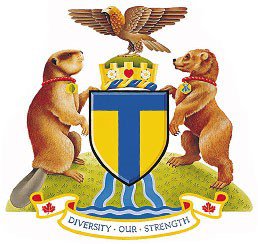


By Happy Canuck
11/02/2017
I just read in my morning newspaper that whites had become a minority in Toronto. My hometown, where I have spent my entire life, is now a majority-minority city:
OTTAWA — Most people in Canada’s biggest city now identify as visible minorities, as new census data shows increasing diversity in Toronto and many of its neighbouring suburban areas.
More than half of respondents to the 2016 census in the City of Toronto — 51.5 per cent — said they’re from visible minority communities, a milestone that was narrowly missed when 49 per cent identified that way in 2011. [Author’s note: visible minority is the Canadian government’s term for non-whites. Peter Brimelow’s use of it in Alien Nation distressed some reviewers.]
A majority of Torontonians now identify themselves as visible minorities, by Alex Ballingall, Toronto Star, October 25, 2017
In many ways, this isn’t news. The Star article only confirms what I can see with my own eyes every time walk by the mosque on my way to the local park where Filipino and black high school students play basketball. The overwhelmingly white Toronto of my childhood and adolescence disappeared years ago.
To hear some people tell it, this transformation was bound to happen — the only surprise was that it took so long:
Toronto is a minority majority city at last, fully 51.5 per cent of us identify as visible minorities and almost half, or 48.8 per cent, do so in the GTA. (Author’s note: Greater Toronto Area)
“At last,” not because this fulfils a dire take-over-the-country prophecy by “foreigners,” but because in a capitalist society, this was inevitable.
The census makes for a colourful portrait, now how do we get along? By Shree Paradkar, Toronto Star, October 25, 2017

Shree Paradkar, “Toronto Star race and gender columnist,” is herself an immigrant [I was white until I came to Canada: Paradkar, Toronto Star, June 30, 2017]. And she’s just wrong. This demographic change had nothing to do with “capitalism” and it was not “inevitable.” It was a choice.
Although politicians and the immigration lobby cynically cite “labor shortages” as a justification for taking in more than 300,000 immigrants a year — about to be raised to an incredible 450, 000, multiply by ten to get the U.S. equivalent — Canadian immigration policy comes with heavy fiscal costs according to the Vancouver-based Fraser Institute:
We estimated in our earlier papers that because of the low average incomes of recent immigrants, the low taxes they pay and the government services they absorb, the fiscal burden on Canadian taxpayers was over $6,000 per capita in fiscal year 2005/06, and that the total fiscal burden in that year was between $16.3 billion and $23.6 billion.
Immigration and the Welfare State Revisited: Fiscal Transfers to Immigrants in Canada in 2014 (PDF), November 10, 2015
Toronto and other parts of Canada have changed, not because of economic necessity, but because politicians in Ottawa see political advantage in electing a new people.
The federal Liberal party, broadly equivalent to Democrats, have long supported high immigration because most newcomers vote for them. But in the 1980s Brian Mulroney’s Progressive Conservative party (broadly equivalent to the GOP) decided two could play at that game. Largely in a bid to win over immigrant voters, Mulroney doubled immigration levels — something which in Canada can be done by executive action [(Conservative Immigration Minister Barbara McDougall Wins Battle To Increase Immigration, by Hugh Winsor, The Globe And Mail, October 24, 1990]. This Conservative courting of immigrants continued under Stephen Harper, not that it did him much good.

So where does this leave Toronto? Is this new non-white city a better place to live than the old Anglo Protestant city I grew up in — as the child of Eastern European Catholic immigrants?
Of course, different people will give different answers, but I see this change as a catastrophe whose full consequences we have yet to see.
The problems facing Toronto could fill a book, but here some of the major ones:

Efforts by police to control the street gang problem have led to tensions between blacks and the city’s police force. Toronto has its own Black Lives Matter movement while the Toronto Star and black activists constantly protest against the police practice of “carding” black youth — i.e. stopping young black men in high-crime neighborhoods and questioning them in order to gather information — “carding” means the police ask for ID [Activist’s protest against practice of ‘carding’ derails Toronto police board meeting, by Wendy Gillis, Toronto Star, April 20, 2017]
Reading through the problems I’ve just listed, I find myself comparing the Toronto of today to the city my parents came to in the late 1950s. While the MSM and the political Establishment tell us that Toronto is much better place, I don’t believe them. When my parents arrived, Toronto was a city of opportunity. Even though neither of my parents had gone to high school, they were able to build a middle-class lifestyle for their family. My father, especially, always told me Canada was a place where anyone could have a good life, provided he was willing to work.
I still think Canada is a good place to live compared to other countries, but I see things headed in the wrong direction. And the main culprit is bad immigration policy. While Toronto isn’t the only part of Canada hurt by immigration, it offers particularly compelling lessons about the damage bad policy can do.
I started my list of Toronto’s problems with the cost of housing because it’s the one that weighs most on my mind. I wonder how much longer I will be able to live in the city I grew up in. Toronto has a housing crisis because the construction of new housing can’t keep up with the demand created by the flood of immigrants who keep coming in.

I also worry about the racial tensions that exist here. I disagree with Toronto’s motto (it’s literally on the City’s coat of arms, created as recently 1997) “Diversity Our strength.” It’s hard to believe in the value of racial diversity when you live in a city full of black street gangs. It’s even harder when you have groups like Black Lives Matter constantly attacking the police for doing their job.
Diversity doesn’t look like strength either when candidates for federal office can campaign almost entirely in Chinese or when Muslim women insist on the right to cover their faces in public.
Immigration has changed Toronto beyond recognition. But these changes occurred without debate because the media and the Political Class decided to treat immigration as a religion.
And woe to the heretic who dissents!
The Happy Canuck is a lifelong resident of Toronto who has been following Canadian immigration policy for many years. Aside from immigration, he has an interest in urban planning, race relations and free speech. He writes anonymously because his employer might not like his views.